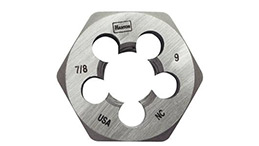
Oct . 11, 2024 11:34
Back to list
صمام تنظيم
Understanding the Functionality and Importance of a Pressure Regulating Valve (صمام تنظيم)
A Pressure Regulating Valve (PRV), or صمام تنظيم in Arabic, is a pivotal component in various fluid and gas systems. It plays a crucial role in maintaining consistent pressure levels, ensuring that systems operate efficiently and safely. In this article, we will explore the function, applications, and significance of pressure regulating valves, as well as some key considerations for their use.
What is a Pressure Regulating Valve?
A Pressure Regulating Valve is designed to control the pressure of fluids in a system. It automatically adjusts to changes in pressure upstream and downstream, providing a steady output pressure regardless of fluctuations in the input supply. This is vital in ensuring that equipment functions within its intended pressure range, preventing overloads that could lead to failure or accidents.
How Does a Pressure Regulating Valve Work?
The PRV operates based on a mechanical, pneumatic, or electronic control mechanism. It senses the upstream pressure and adjusts its position to increase or decrease the flow of the fluid or gas passing through it. When the upstream pressure exceeds the set point, the valve modulates to reduce the flow, thereby lowering the pressure downstream. Conversely, if the pressure falls below the set threshold, the valve opens to allow more fluid to flow through, increasing the pressure back to the desired level.
Applications of Pressure Regulating Valves
Pressure regulating valves are widely utilized across various industries, including
1. Water Supply Systems In municipal water supply networks, PRVs manage the pressure of water delivered to buildings and homes, preventing pipe bursts and ensuring consistent supply.
2. Oil and Gas In the oil and gas sector, PRVs are crucial for maintaining safe pressure levels in pipelines and storage tanks, where fluctuations can lead to hazardous situations.
3. HVAC Systems In heating, ventilation, and air conditioning (HVAC) systems, pressure regulation is vital for maintaining airflow and temperature control, enhancing energy efficiency and comfort levels.
4. Manufacturing Many manufacturing processes require precise pressure control for optimal performance and product quality. PRVs help maintain the necessary conditions for various processes, from chemical production to food processing.
Understanding the Functionality and Importance of a Pressure Regulating Valve (صمام تنظيم)
Importance of Pressure Regulating Valves
صمام تنظيم

The significance of pressure regulating valves cannot be overstated. They are essential for
- Safety By preventing pressure overloads, PRVs contribute to the overall safety of industrial and residential systems, reducing the risk of accidents, leaks, or catastrophic failures.
- Efficiency Maintaining optimal pressure levels improves the efficiency of systems, leading to lower operational costs and reduced energy consumption.
- Equipment Longevity By ensuring that systems operate within their designed pressure limits, PRVs help extend the lifespan of equipment and components, resulting in fewer repairs and replacements.
- Quality Control In manufacturing and processing industries, precise pressure control is vital for maintaining product quality and consistency.
Key Considerations When Choosing a Pressure Regulating Valve
When selecting a pressure regulating valve, there are several critical factors to consider
1. Pressure Range Ensure the valve can handle the required pressure range for your specific application.
2. Flow Rate Consider the flow requirements of your system to select a valve that can efficiently handle the desired volume of fluid or gas.
3. Material Compatibility Choose materials that are compatible with the fluids or gases being transported to prevent corrosion and ensure durability.
4. Installation and Maintenance Assess the ease of installation and the maintenance requirements of the valve to ensure it can be properly serviced over its lifespan.
5. Regulatory Compliance Ensure that the valve meets all regulatory standards applicable to your industry for safety and performance.
Conclusion
In conclusion, pressure regulating valves are integral components in a multitude of systems across various industries. Their ability to maintain consistent pressure levels enhances safety, efficiency, and product quality. Understanding their functionality and making informed choices when selecting PRVs can lead to significantly improved operational performance and reduced risks, ensuring that systems run smoothly and effectively.
Latest news
-
Safety Valve Spring-Loaded Design Overpressure ProtectionNewsJul.25,2025
-
Precision Voltage Regulator AC5 Accuracy Grade PerformanceNewsJul.25,2025
-
Natural Gas Pressure Regulating Skid Industrial Pipeline ApplicationsNewsJul.25,2025
-
Natural Gas Filter Stainless Steel Mesh Element DesignNewsJul.25,2025
-
Gas Pressure Regulator Valve Direct-Acting Spring-Loaded DesignNewsJul.25,2025
-
Decompression Equipment Multi-Stage Heat Exchange System DesignNewsJul.25,2025

